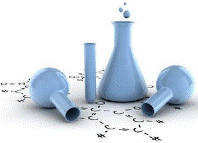Chemical and Biomolecular Engineering, Department of

Department of Chemical and Biomolecular Engineering: Faculty Publications
Date of this Version
2-28-2024
Document Type
Article
Citation
J. Phys. Chem. C 2024, 128, 4969−4977. https://doi.org/10.1021/acs.jpcc.4c00531
Abstract
Electrolyte species can significantly influence the electrocatalytic performance. In this work, we investigate the impact of alkali metal cations on the oxygen reduction reaction (ORR) on active Pt5Gd and Pt5Y polycrystalline electrodes. Due to the strain effects, Pt alloys exhibit a higher kinetic current density of ORR than pure Pt electrodes in acidic media. In alkaline solutions, the kinetic current density of ORR for Pt alloys decreases linearly with the decreasing hydration energy in the order of Li+ > Na+ > K+ > Rb+ > Cs+, whereas Pt shows the opposite trend. To gain further insights into these experimental results, we conduct complementary density functional theory calculations considering the effects of both electrode surface strain and electrolyte chemistry. The computational results reveal that the different trends in the ORR activity in alkaline media can be explained by the change in the adsorption energy of reaction intermediates with applied surface strain in the presence of alkali metal cations. Our findings provide important insights into the effects of the electrolyte and the strain conditions on the electrocatalytic performance and thus offer valuable guidelines for optimizing Pt-based electrocatalysts.
Included in
Biochemical and Biomolecular Engineering Commons, Biomedical Engineering and Bioengineering Commons


Comments
Open access.